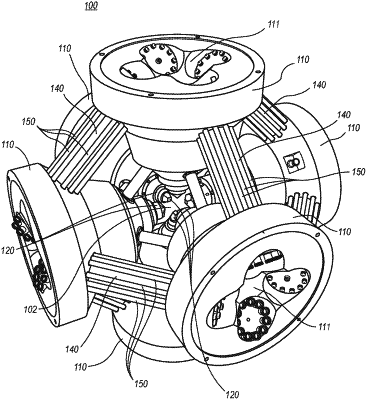| CPC B30B 11/004 (2013.01) [B30B 11/007 (2013.01); B30B 15/042 (2013.01); B30B 15/045 (2013.01)] | 17 Claims |

|
1. A high pressure press comprising:
a first press base including a first piston cavity for receipt of a first piston and a first tie bar cavity opposite the first piston cavity;
a second press base including a second piston cavity for receipt of a second piston and a second tie bar cavity opposite the second piston cavity, wherein the first piston and second piston are configured to be displaced toward a common region;
at least one spacer positioned between the first press base and the second press base;
a plurality of tie bars extending between, and coupled to, the first press base and the second press base, the plurality of tie bars distinct from the at least one spacer, at least one of the plurality of tie bars including a first end disposed in the first tie bar cavity and a second end disposed in the second tie bar cavity, the plurality of tie bars evenly spaced around and surrounding an entire outer periphery of a cross-section of the at least one spacer, wherein the plurality of tie bars are in a state of tension and the at least one spacer is in a state of compression;
wherein a quantity of tie bars of the plurality of tie bars extending between the first press base and the second press base is greater than a quantity of the at least one spacer extending between the first press base and the second press base.
|